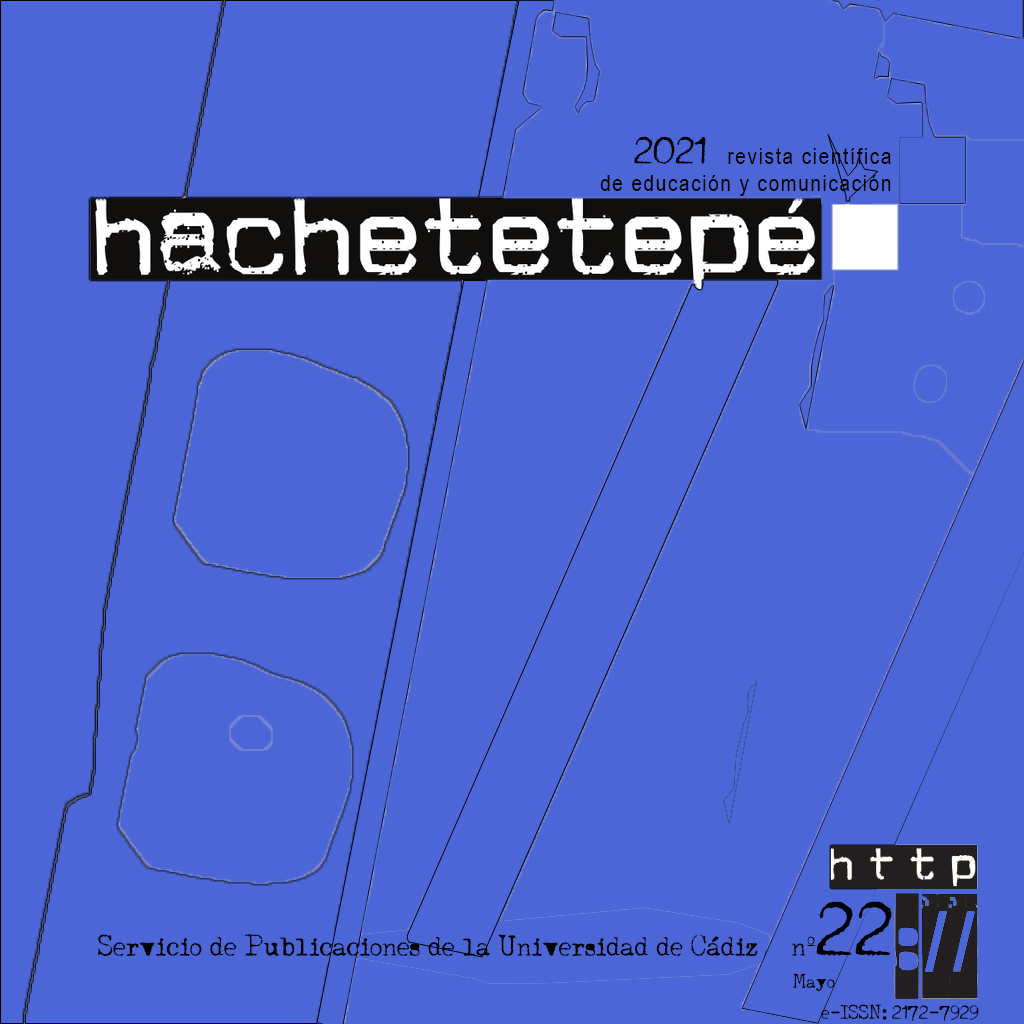Translation of children’s and young adult literature and perpetuation of femininity and masculinity models

Downloads
- PDF (Español (España)) 959
- EPUB (Español (España)) 89
- VISOR (Español (España))
- MÓVIL (Español (España))
- XML (Español (España)) 11
DOI
https://doi.org/10.25267/Hachetetepe.2021.i22.1207Info
Abstract
Stereotypes have always strongly conditioned our way of perceiving and understanding the world around us. The reading of children’s and young adult literature plays a key role in the socialization process by means of which children learn to behave the way society expects them to according to their genderIf we take into account the fact that in Spain the percentage of translations in relation with total publications of children’s and young adult literature, has been around 40% in the last years, we must agree that translation of this kind of literature contributes to a great extent to shaping the masculinity and femininity models children are exposed to. This is an empirical-descriptive, comparative analysis of the translations into Spanish and Valencian of one volume of two series of children’s books originally written in German: Der Kleine Vampir by Angela Sommer-Bodenburg and Hexe Lilli by Ludger Jochmann (Knister). The main conclusion is that even in these works, in which female characters embody new prototypes, either due to factors that are overlooked in the original and passed on in the translation, or to manipulations motivated by the reception pole of the translation, some of the stereotypes meant to be eradicated are perpetuated.Keywords
Downloads
How to Cite
License
Copyright (c) 2021 Belén Lozano Sañudo

This work is licensed under a Creative Commons Attribution-NonCommercial-NoDerivatives 4.0 International License.
Those authors who have published with this journal, accept the following terms:
- They will retain their copyright and guarantee the journal the right to first publication of their work, which will simultaneously be subject to the Creative Commons Attribution License . They may be copied, used, disseminated, transmitted and publicly displayed, provided that the authorship, url, and magazine are cited, and are not used for commercial purposes. No derivative works are allowed.
- They may adopt other non-exclusive license agreements for the distribution of the published version of the work (e.g., deposit it in an institutional telematic archive or publish it in a monographic volume) provided that the initial publication in this journal is indicated.
- Disseminate your work through the Internet (e.g., in institutional telematic archives or on your website) once the manuscript is accepted, which may lead to interesting exchanges and increased citations of the published work. (See The effect of open access).
Hachetetepé. Scientific journal of education and communication does not charge a fee for the submission of manuscripts or for the publication of its articles.
References
Abeyà Lafontana, M., y Gabarró Parera, M. (2011-2012). Seminari "El gust per la lectura” 2011-2012 Educació Primària. Subdirecció General de Llengua i Plurilingüisme. Servei d’Immersió i Acolliment Lingüístics. Angela Sommer-Bodenburg. https://bit.ly/3gIa4Ni
Amossy, R., y Herschberg, A. (2010). Estereotipos y clichés. Eudeba.
Colomer, T. (1994). A favor de las niñas. El sexismo en la literatura infantil. CLIJ. Cuadernos de Literatura infantil y juvenil, (57), 7-24.
Etxaniz, X. (2011). La transmisión de valores en la literatura, desde la tradición oral hasta la LIJ actual. Revista Ocnos, 7, 73-83.
Fernández, V. (2009). Producción abundante, propuestas interesantes y euforia mediática. En Fundación SM (Ed.), Anuario sobre el libro infantil y juvenil 2010 (pp. 17-26). SM. https://bit.ly/3vjbHoD
Fundesplai (2018). Guia de contes i novel·les per la igualtat de gènere i la violència zero (de 3 a 18 anys). https://bit.ly/3ey1w90
Lefevere, A. (1992). Translation, Rewriting and the Manipulation of Literary Fame. Routledge.
Lippmann, W. (1921). Public Opinion. Macmillan. https://bit.ly/3xCTXXk
López-Valero, A., Encabado-Fernández, E., y Jerez-Martínez, I. (2013). La Literatura Infantil como Instrumento para la Acción Educativa y Cultural. Reflexiones sobre su Imposibilidad Basadas en la Sombra del Adulto. Eucación XX1, 16(2), 247-264. https://doi.org/10.5944/educxx1.2.16.10341
Meads, M. (1935). Sex and Temperament. William Morrow.
Mejías, T (2020). Angela Sommer-Bodenburg: La lectura y la escritura a mano son fundamentales en la educación infantil. Público. https://bit.ly/3dSWrc0
Mikoter J., y Planka S. (2012). Der Vampir. KinderundJugendmedien.de. Wissenschaftliches Internetportalfür Kindermedien und Jugendmedien. https://bit.ly/3sW94rg
Polanco, J. L. (2019). 2017-2018: Buenos Libros para Tiempos Mejores. En Fundación SM (Ed.), Anuario Iberoamericano sobre el Libro Infantil y Juvenil. SM. https://bit.ly/2Ppk5DA
Toledo, J.M. (1985). Manuales para una educación no sexista. En Anales de la Universidad de Alicante. Escuela de Magisterio nº2 (pp.219-240). Gráficas Vidal-Leuka, S.A.
Toury, G. (1995). Descriptive Translation Studies and Beyond. John Benjamins.






